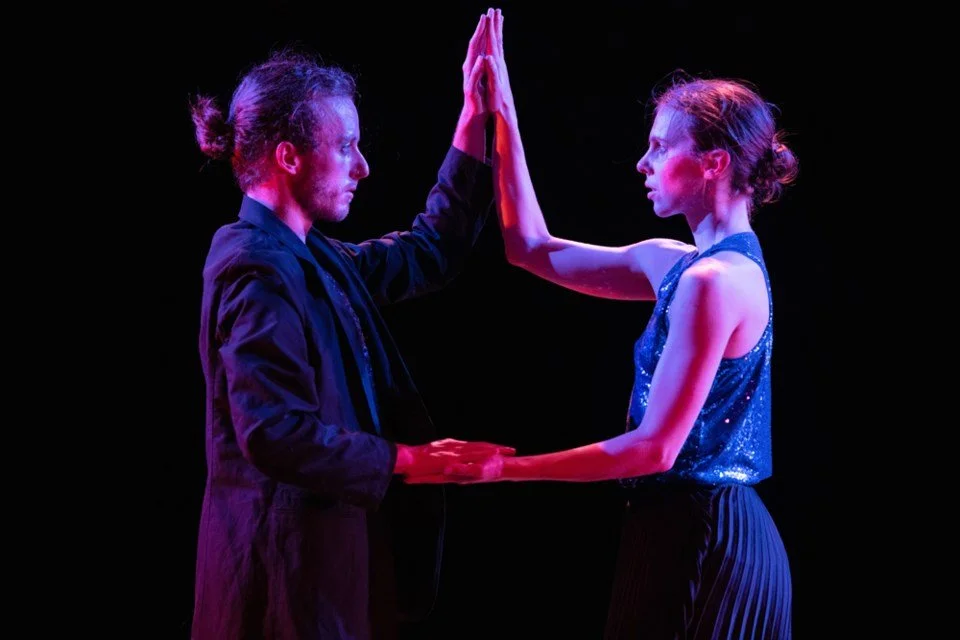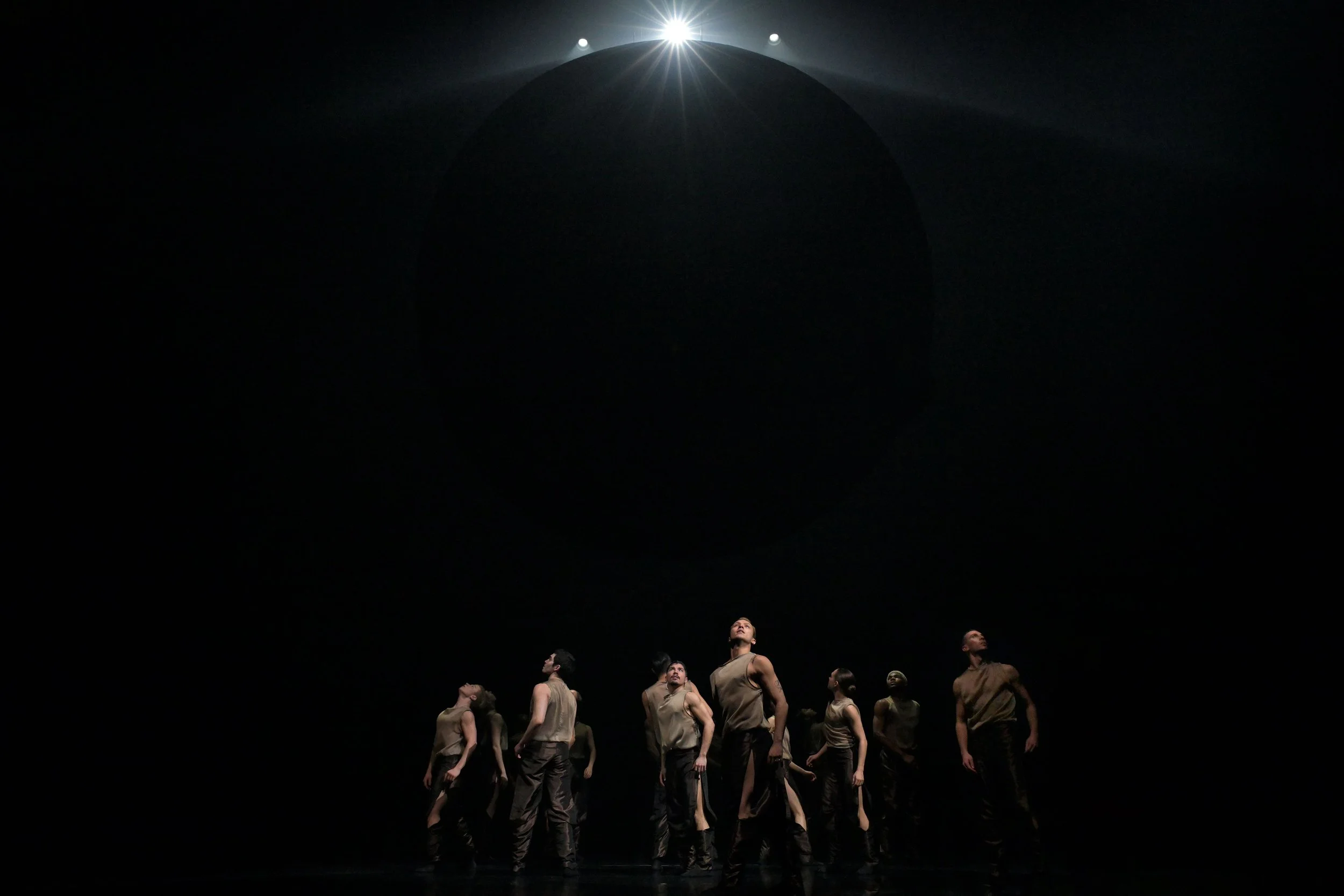Dance review: Tuning creates a hypnotic world of voice, vocoder, and movement
Intimacy and connection are the driving themes of new full-length by Vanessa Goodman
Ted Littlemore and Alexis Fletcher in Tuning. Photo by David Cooper
Tuning is at the Shadbolt Centre for the Arts until February 26
THERE’S A MESMERIZING moment in choreographer Vanessa Goodman’s new Tuning when ethereal vocalizations echo into the space, dancers Ted Littlemore and Alexis Fletcher circling in an embrace at centre stage.
It’s a moving sequence where time stands still. And it’s a perfect example of the piece’s intimacy and connection, fuelled by the simple power of the human voice—of two people perfectly tuned into each other.
Commissioned by independent dance artist and Ballet BC alumna Fletcher, Tuning debuted as a short work at last year’s Dancing on the Edge festival. Now Goodman has developed the piece for the two honed, expressive, and somehow preternaturally matched dancers into a full-length world premiere. Wearing matching pleated skirts, sequinned bodices, suit jackets, and hair buns, the two performers mirror each other.
One huge strength the show has going for it is that Littlemore has an extensive background as a musician and singer, and his beautiful voice—particularly in the opening strains of the most haunting rendition of “Stand By Me” you may ever hear—brings nuance and charisma to the live-generated score. While he works a vocoder, layering and looping vocals while seated on the floor, Fletcher creates a kind of deeply attuned conversation with him through movement. Then Fletcher takes a turn at the vocoder, her simple, sustained notes accumulating into a hypnotic chorus as Littlemore seems to channel the sound waves in his body.
The show has a dreamlike feel, not only because of James Proudfoot's atmospheric lighting, punctuated with hues of vibrant pink and green, but even in Goodman’s choreography. The Action at a Distance artistic director has a way of finding the angles of elbows and knees, and employing them in sculptural yet fluid and otherworldly ways. The dancers lunge, turn, and then suddenly arch deeply backwards, as if some unseen force—the sound that washes over them?—is propelling them. As interpreters, Fletcher and Littlemore commit deeply to the piece’s emotional world.
They seem to connect on a higher, almost magnetic level, eyes and hands meeting like they're passing an invisible energy—something akin to vulnerable, unconditional, platonic love—between them. For anyone in need of this artwork's intimate embrace, it's a moving experience watching them opening their voices and bonding in the dark, at a time when alienation and disconnection reign.














